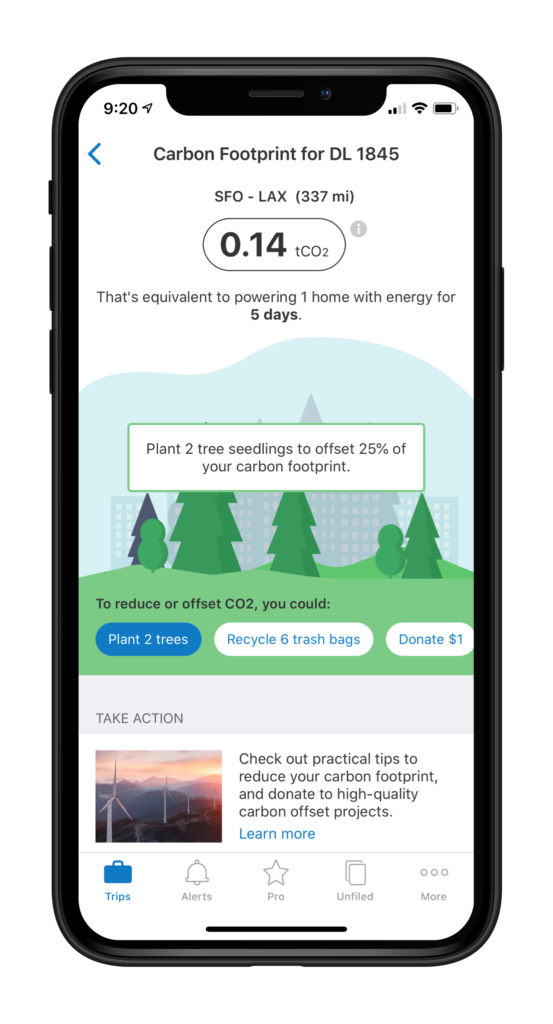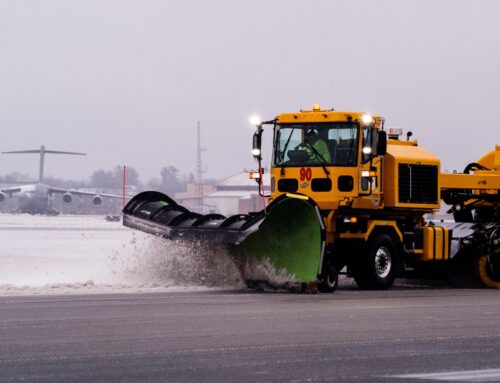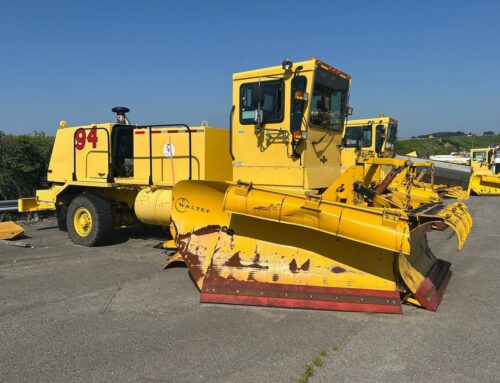More Air Travelers Tracking Carbon Footprints
Apps calculating carbon emissions grow in use; industry embraces green initiatives
By Stacey Federoff
Published February 10, 2020
Read Time: 3 mins
A survey of British citizens found that 42 percent believe the price of an airline ticket should reflect the environmental impact that flying causes, even if it makes air travel more expensive.
But the British Department for Transport also found that only 17 percent of the survey takers said they were willing to reduce their air travel to reduce the impact of climate change.
Those results suggest that while travelers are concerned about climate change, they’re also looking for ways to reduce carbon emissions related to their travel.
Luckily, they’re getting help from airports, airlines and the travel industry.
Airports are increasingly focusing on environmental initiatives. Boston Logan International Airport has wind turbines on its office roof, and Denver International Airport installed a giant solar power array. Pittsburgh International Airport became the first airport to join the 2030 District Challenge, a national environmental initiative, and last year announced plans to become the first airport in the world to be completely powered by its own microgrid, fueled in part by 8,000 solar panels across eight acres.
Airlines in the U.S. and around the world have launched efforts to help reduce the amount of carbon emissions from commercial flights using everything from state-of-the-art technology to ultra-efficient operations to buying carbon offsets that fund environmental projects.
The International Air Travel Association reports that more than 30 member airlines have introduced programs to help offset carbon emissions via integrated fees in online ticket-selling platforms or through a third-party provider.
Information reduces stress
Travel app developers and other ticket sellers are helping air passengers be more proactive about sustainability.
FlyGrn.com uses a ticket fee to fund solar panel construction projects in India, while travel-organizing app TripIt recently introduced a feature to show the carbon footprint of each flight a user tracks.
The developers sought to bring the app “as much functionality as we can that will help reduce stress for the traveler,” said Jen Moyse, director of product at TripIt. “We decided we’re not interested in making any judgments, but because we knew so many of our travelers were interested in understanding that impact … it just seemed like a natural fit to add some carbon footprint data.”

Travel-organizing app, TripIT, displays information on the carbon footprint of flights. (Image courtesy of TripIT)
The app calculates a flight’s impact based on distance, flight class and environmental elements, then provides context (“That’s equivalent to powering 385 homes for 1 year”). The app also suggests ways to offset those emissions, such as flying economy, taking nonstop flights or considering carpooling or train travel.
The app has worked through a few bugs, but user reviews have generally been positive.
“I’m sure there are plenty of travelers who haven’t thought of this and maybe they’re thinking about it now, and they will send us feedback as well,” Moyse said.
Global impact
Carbon dioxide, a by-product of burning fossil fuels, makes up 82 percent of greenhouse gas emissions in the U.S., according to the Environmental Protection Agency.
“The climate impact of anything we do regarding carbon dioxide especially is truly global,” said Neil Donahue, director of the Steinbrenner Institute for Environmental Education and Research and chemical engineering professor at Carnegie Mellon University. “The climate effect of the emissions from coal, oil and natural gas pretty much lasts forever.”
Still, fuel burned during flights accounts for only 2 percent of all human-induced emissions overall, according to the Air Transport Action Group.
“Aviation is deeply engaged in helping to make air travel sustainable and has been for some time,” said Perry Flint, head of IATA’s U.S. corporate communications.
Carbon emissions are half what they were in 1990. Since 2008, Flint said the industry’s goal has been to cap net emissions from 2020, cutting them in half again by 2050, working through the United Nations’ International Civil Aviation Organization with a plan known as Carbon Offset and Reduction Scheme for International Aviation, or CORSIA.
First steps
OffCents, another app, detects and tracks flight data as well as other types of travel, then allows users to buy carbon credits for their carbon emissions.
These tools are helpful, especially when it comes to education, but larger-scale changes in travel like airlines using biodiesel made without synthetic fertilizer or electric rail systems with zero- or low-carbon emissions could make a bigger impact.
“It’s a first step, but it’s not going to get us to … zero net fossil carbon emissions,” said Donahue, adding that offsets that directly substitute building solar panels in place of fossil fueled power plants can also help.






